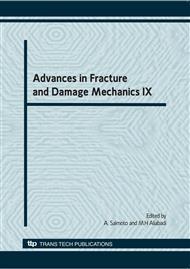p.717
p.721
p.725
p.729
p.733
p.737
p.741
p.745
p.749
Optimum Mixture Design of Bottom Ash Based Alkali-Activated Mortar Using Artificial Neural Networks
Abstract:
Bottom ash based alkali-activated mortar is prepared by incorporating sodium hydroxide and sodium silicate with some additional water if needed, and is activated with temperature curing. This research was conducted to derive an optimum mixture design of the bottom ash based alkali-activated mortar. The experimental studies were first performed to estimate the effect of the added water content, alkali activator to bottom ash ratio, sodium silicate to sodium hydroxide ratio as well as curing temperature on workability and strength. In order to optimize the mix proportion, based on the experimental results, artificial neural networks were introduced.
Info:
Periodical:
Pages:
733-736
Citation:
Online since:
November 2010
Authors:
Price:
Сopyright:
© 2011 Trans Tech Publications Ltd. All Rights Reserved
Share:
Citation:


